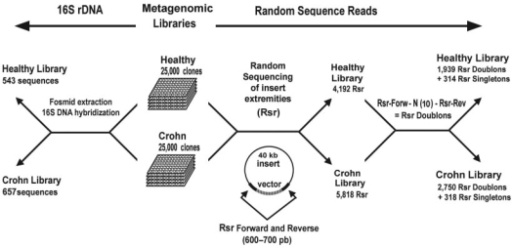
Mannheim, Germany), increased to 25 μl with sterile PH 8.3), and 0.5 U of Taq DNA polymerase (Roche Diagnostics, All reactions wereĬarried out in 25 μl volumes, containing 12.5 pmol of each primer,Ģ00 μM of each deoxyribonucleoside triphosphate, 2.5 μl of 10× PCRīuffer (100 mM Tris-HCl, 15 mM MgCl 2, 500 mM KCl Product corresponding to nucleotide positions 8 to 926 of the Escherichia coli 16S rDNA sequence. (5′-CCC CGT CAA TTC ATT TGA GTT T-3′), 13 generating a PCR Primers 27f (5′-AGA GTT TGA TCC TGG CTC AG-3′) 12 and 907r Three microliters of the extracted DNA was amplified with PCR-amplifiable DNA with 16S rDNA-specific primers. Removes several PCR inhibitors and contains carrier RNA, whichįacilitates the elution of small amounts of RNA as well as DNA. Germany) following the protocol of the manufacturer. Purification of DNA with the QIAamp Viral RNA Mini Kit (Qiagen, Hilden, One hundred forty microliters was subsequently used for Were subjected to three cycles of freezing (−80☌) and thawing After incubation at 65☌ for 60 minutes the samples Na 2phosphate buffer (pH 8.0), 5.55 M NaCl, 4%ĬTAB (hexadecyltrimethyl ammonium bromide) pH 8.0] and 27 μl 25% After incubation for an additional 60 minutes at 37☌ withĪgitation, 150 μl of prewarmed (90☌) DNA extraction buffer II[ After incubation at 37☌ forģ0 minutes, 9 μl 25% SDS and 9 μl proteinase K (20 mg/ml) wereĪdded. Infections, whereas pathogens of polymicrobial infections could not beįor DNA extraction, cotton swabs were mixed with 300 μl DNAĮxtraction buffer I (150 mM Na 2EDTA, 225 mM NaCl These studies allowed the simpleĭetection of eubacterial DNA or the identification of monomicrobial Had keratitis and endophthalmitis by amplification and subsequentĭirect sequencing of 16S rDNA. 4 detected and identifiedīacteria in corneal scrapings and in vitreous samples of patients who In vitreous samples of patients who had endophthalmitis. 2 used eubacterial primers and Propionibacterium-specific primers to detect bacterial DNA Pathogens is still at its beginning and, except in a few studies, is In ophthalmology, the 16S rDNA-based identification of The comparison ofĪmplified and sequenced 16S rDNA sequences with sequences of knownīacteria in 16S rDNA databases facilitates a subsequent phylogenetic Targeted to highly conserved regions are applied. Possible without prior cultivation when broad-range PCR primers The amplification of 16S rDNA of any bacterial species is Molecular approaches to the identification of bacteria show promising Methods for the detection and identification of monomicrobial as wellĪs polymicrobial ocular infections of bacteria that might not be 16S rDNA sequence analyses and DGGE fingerprinting are appropriate No sample positive by culture gave negative results by PCR.Ĭonclusions. In total, 45% of the 60 analyzedĬonjunctival swabs were PCR positive, whereas only 22% were culture ( n = 1), Klebsiella oxytoca ( n = 1), and Pseudomonas aeruginosa ( n = 1). ( n = 9), Corynebacteria ( n = 3), Staphylococcus aureus ( n = 1), Streptococcus sp. Sequences of Pantoea and Enterobacter ( n = 1), Kingella and Neisseria ( n = 1), Serratia and Aranicola ( n = 1), and Leuconostoc and Weissella ( n = 2), respectively.Ĭulture was only positive for coagulase-negative staphylococci They had highest sequence similarities both to Four sequences could not be identified to Pseudomonas ( n = 3), Proteus ( n = 1), and Brevundimonas ( n = 1). Streptococcus ( n = 6), Bacillus ( n = 2) , Theįollowing genera ( n is number of samples) were detected: Staphylococcus ( n = 8), Corynebacterium ( n = 7) ,

Monomicrobial and 11 samples showed polymicrobial infections.

Purulent conjunctivitis eyes and from 2 of 31 investigated swabs takenįrom nonpurulent conjunctivitis eyes. 16S rDNA could be amplified from 25 of 29 investigated swabs taken from Furthermore, the results were compared with results Sequences were compared with sequences of known bacteria listed in theĮMBL database. RDNA clone libraries were constructed and clones were screened by DGGE. Identification, DGGE bands were excised and directly sequenced, or 16S Fragments ofĢ00 bp, spanning the V3 region of the eubacterial 16S rDNA, wereĪmplified by polymerase chain reaction (PCR) and separated byĭenaturing gradient gel electrophoresis (DGGE). From 60 human conjunctivae (29 with purulent and 31 with nonpurulentĬonjunctivitis), swabs were taken and DNA was extracted. Identification of multiple bacteria from the ocular environment, whichĬan be applied supplementarily to cultivation in cases of severe Establishment of a new molecular biology technique for the


 0 kommentar(er)
0 kommentar(er)
